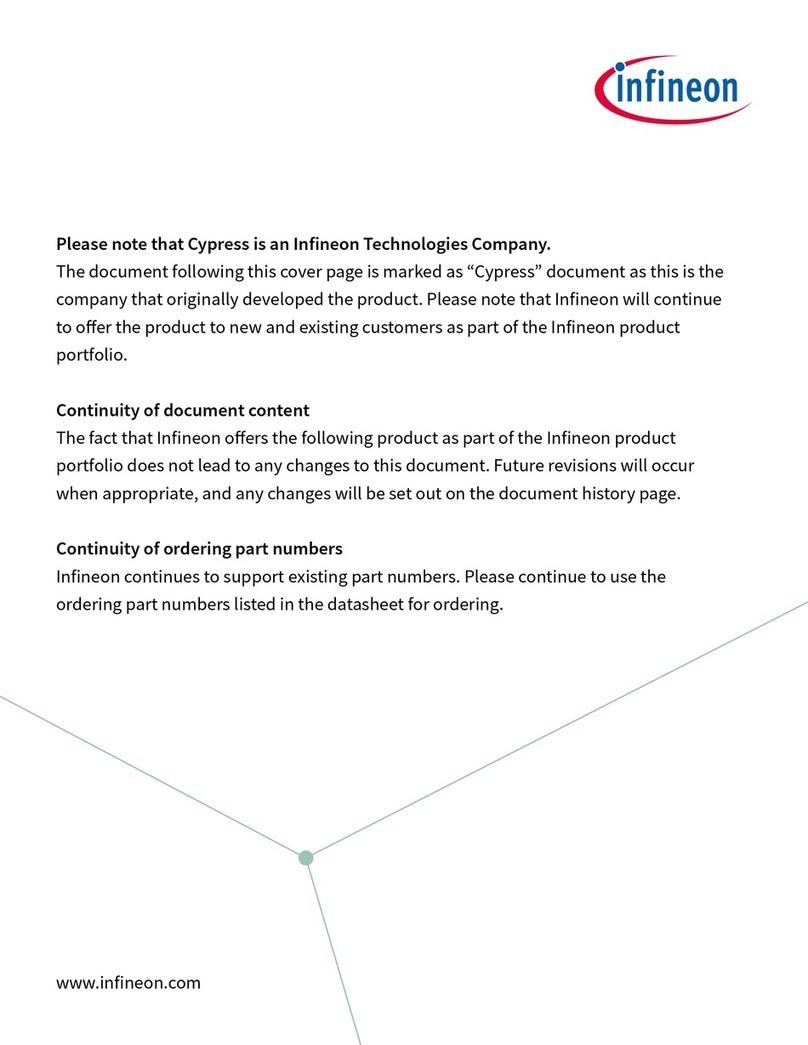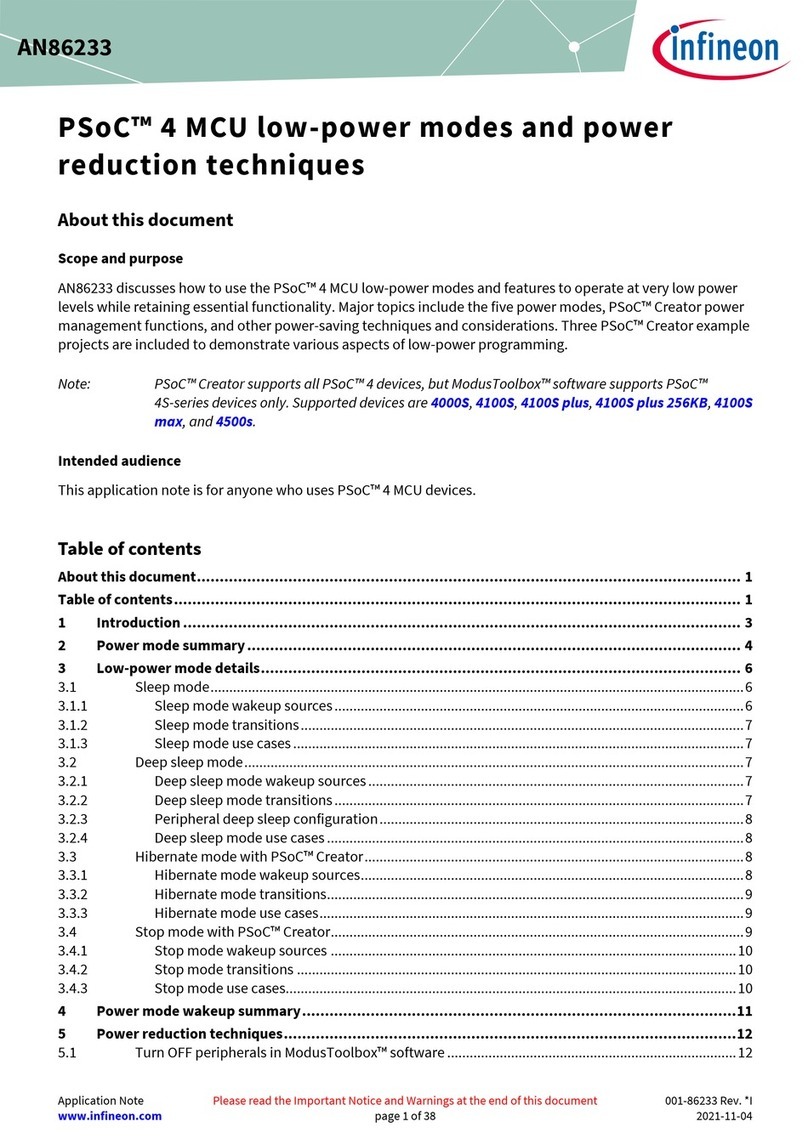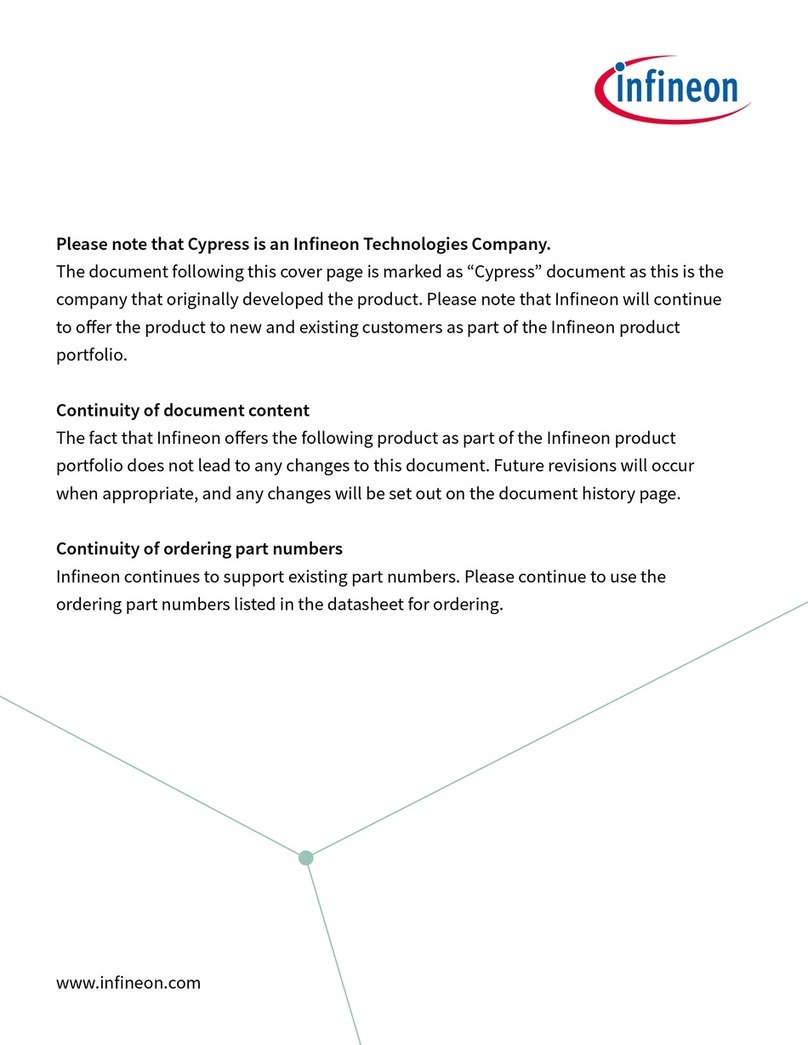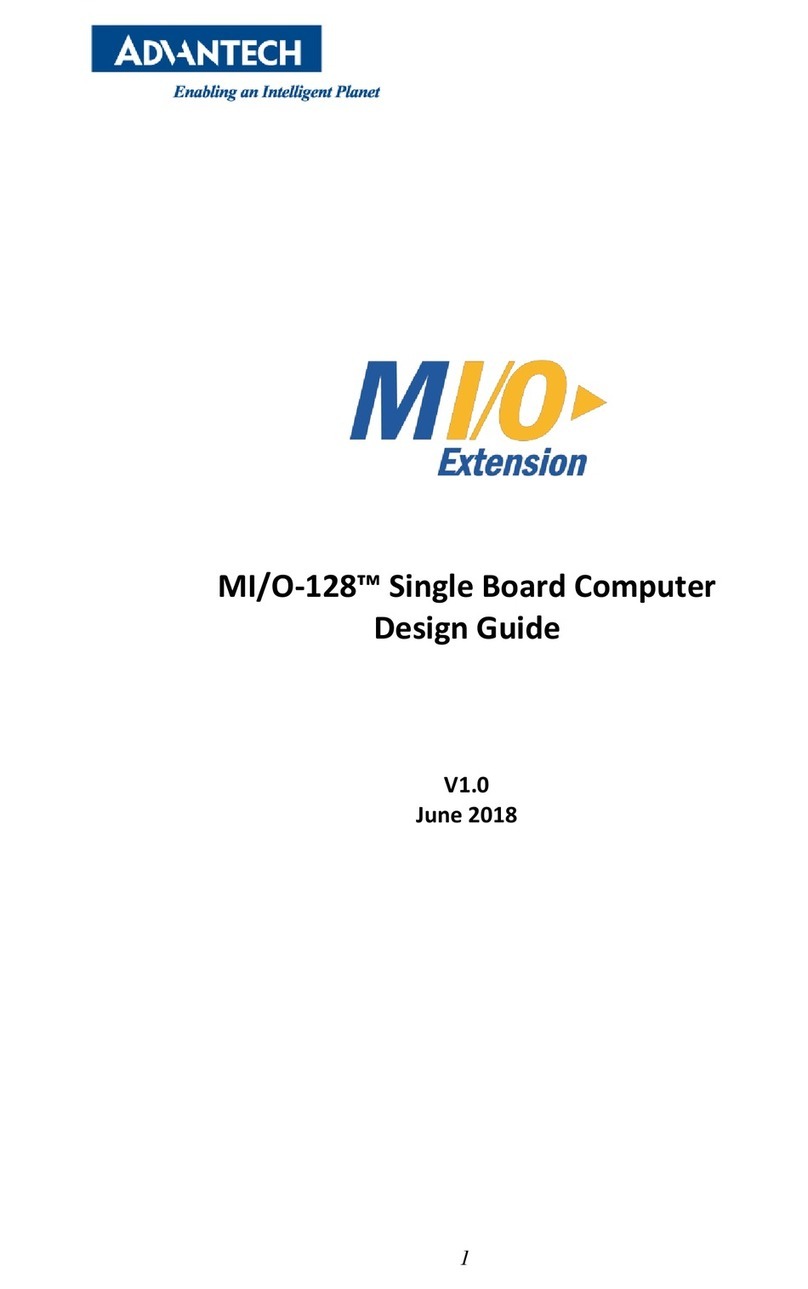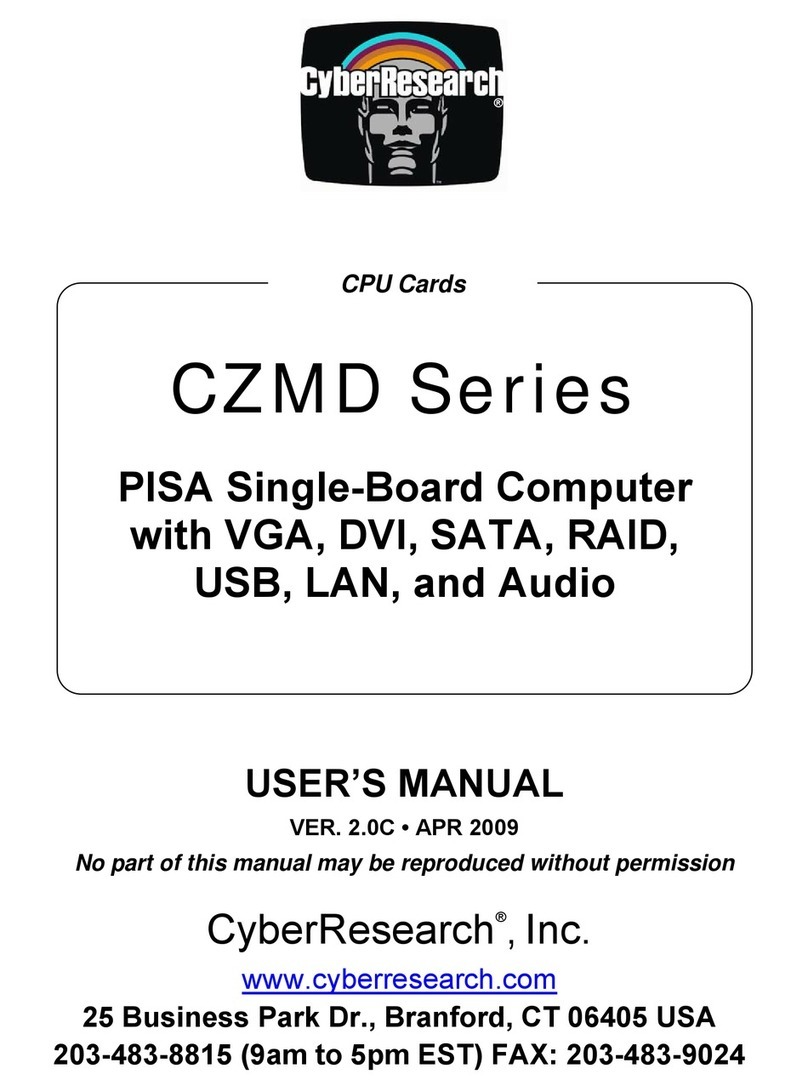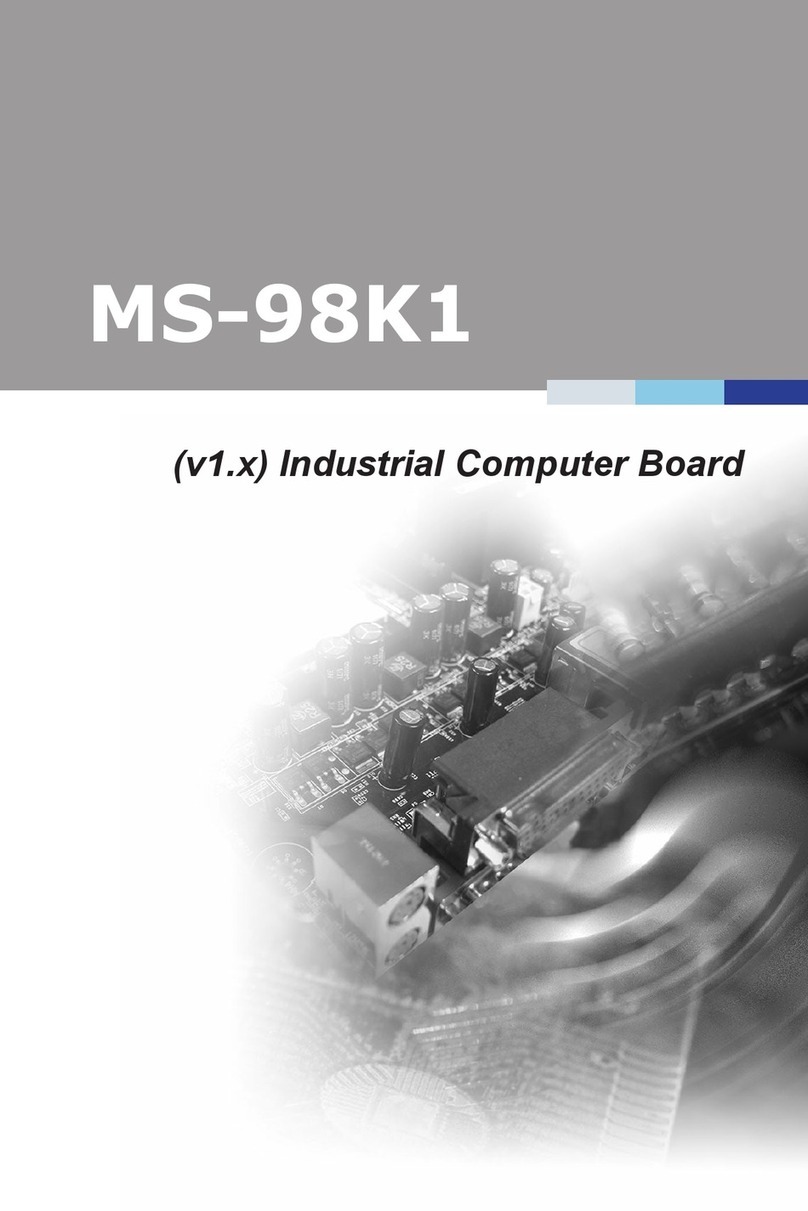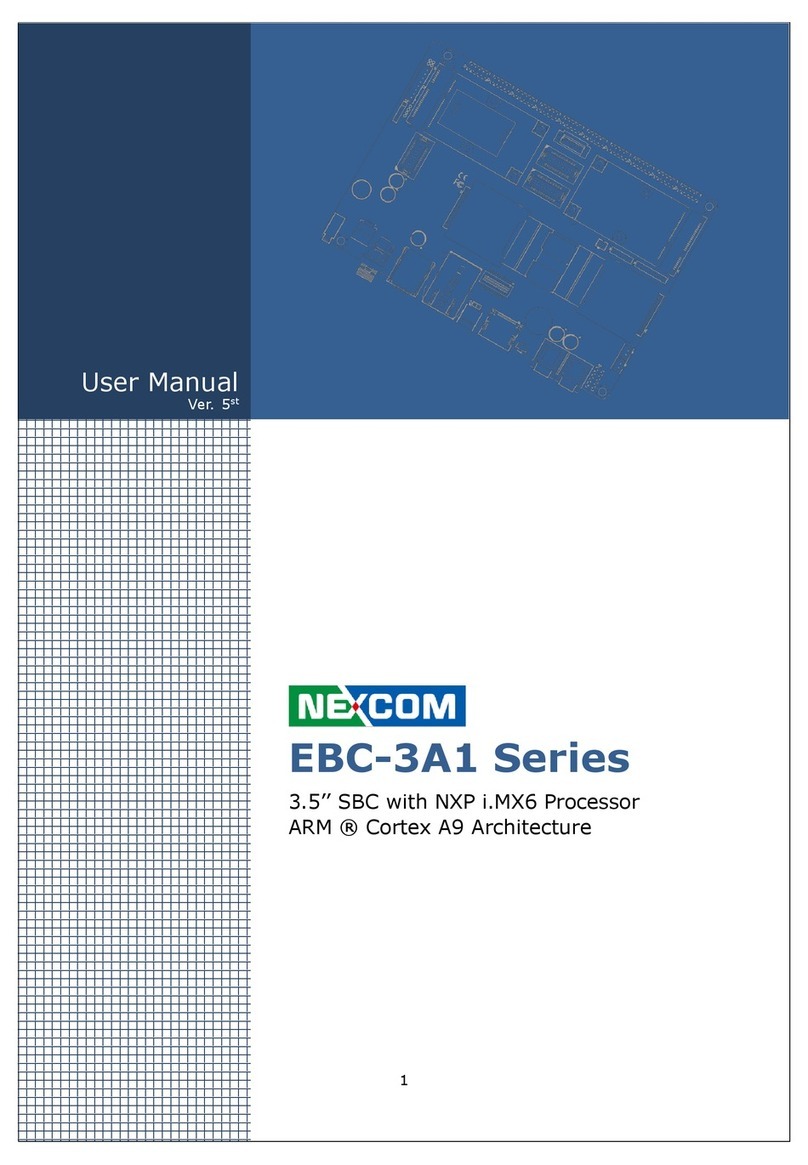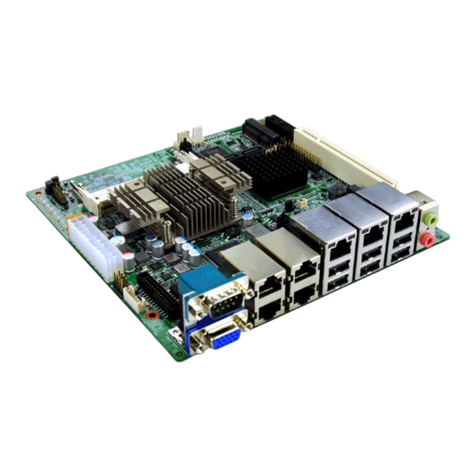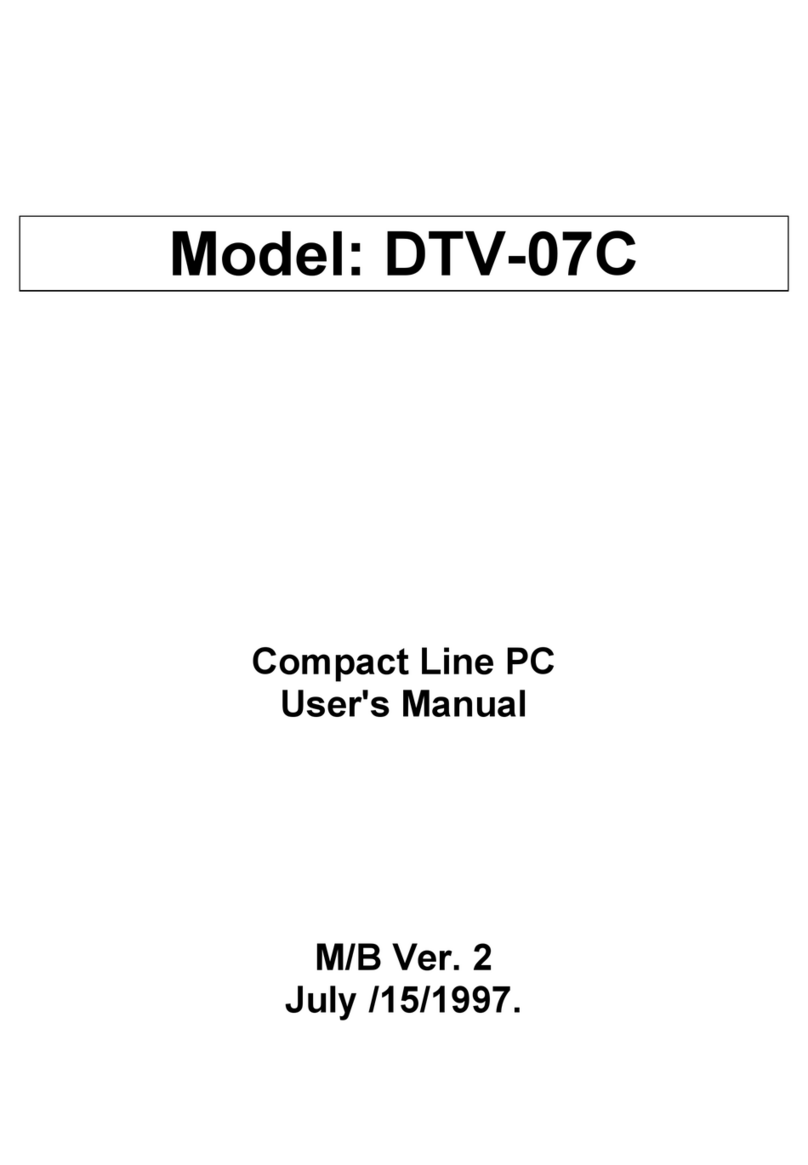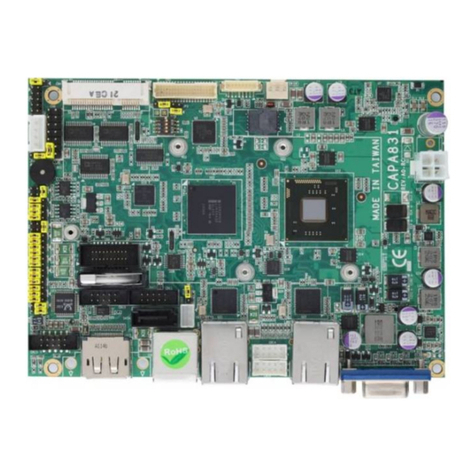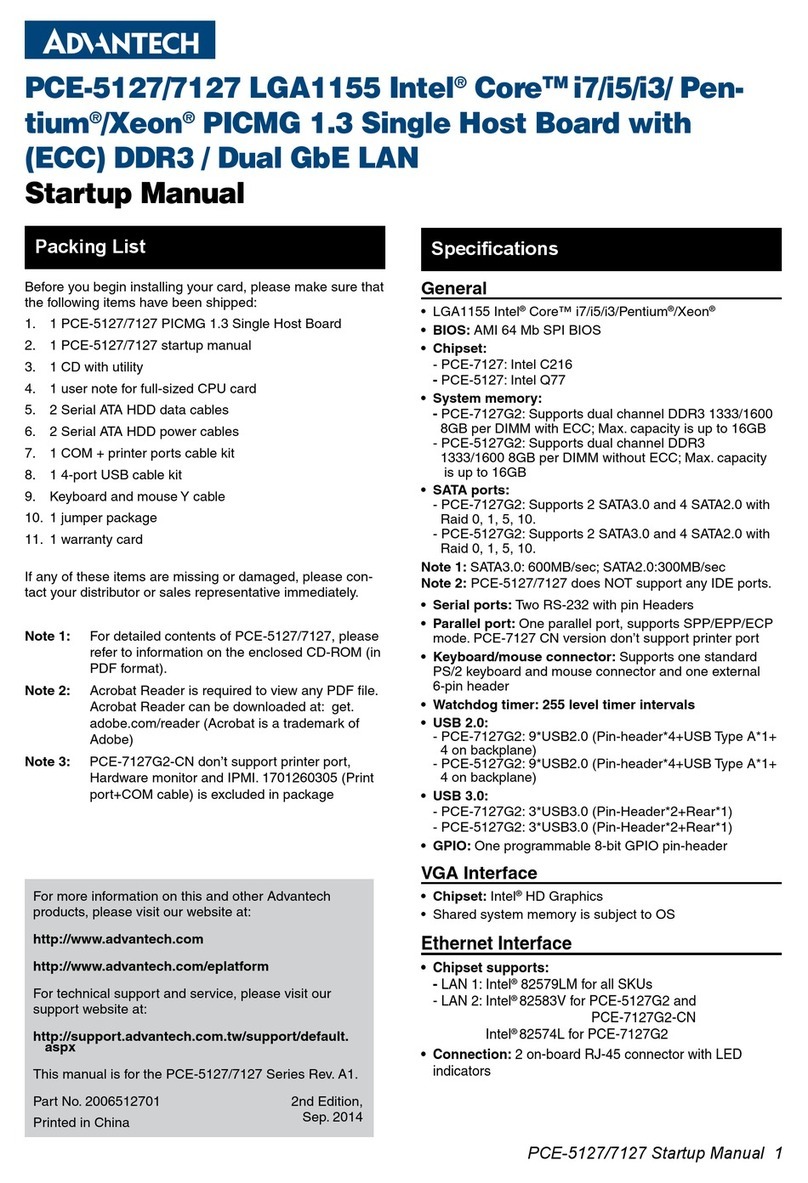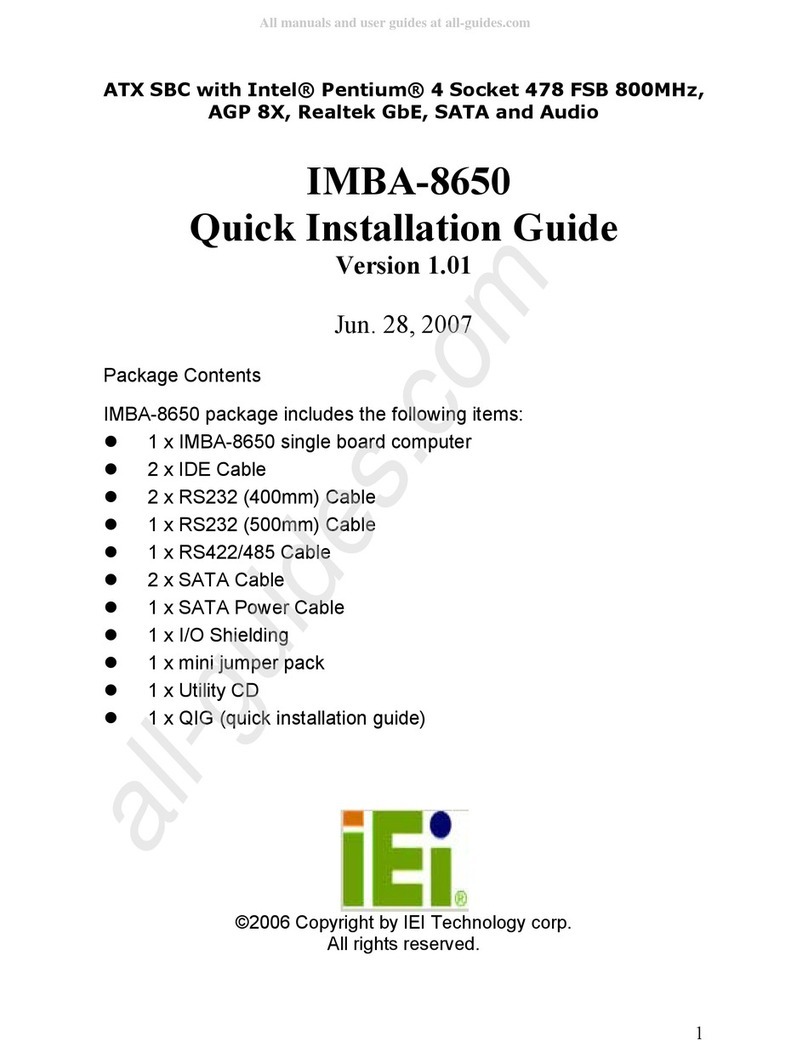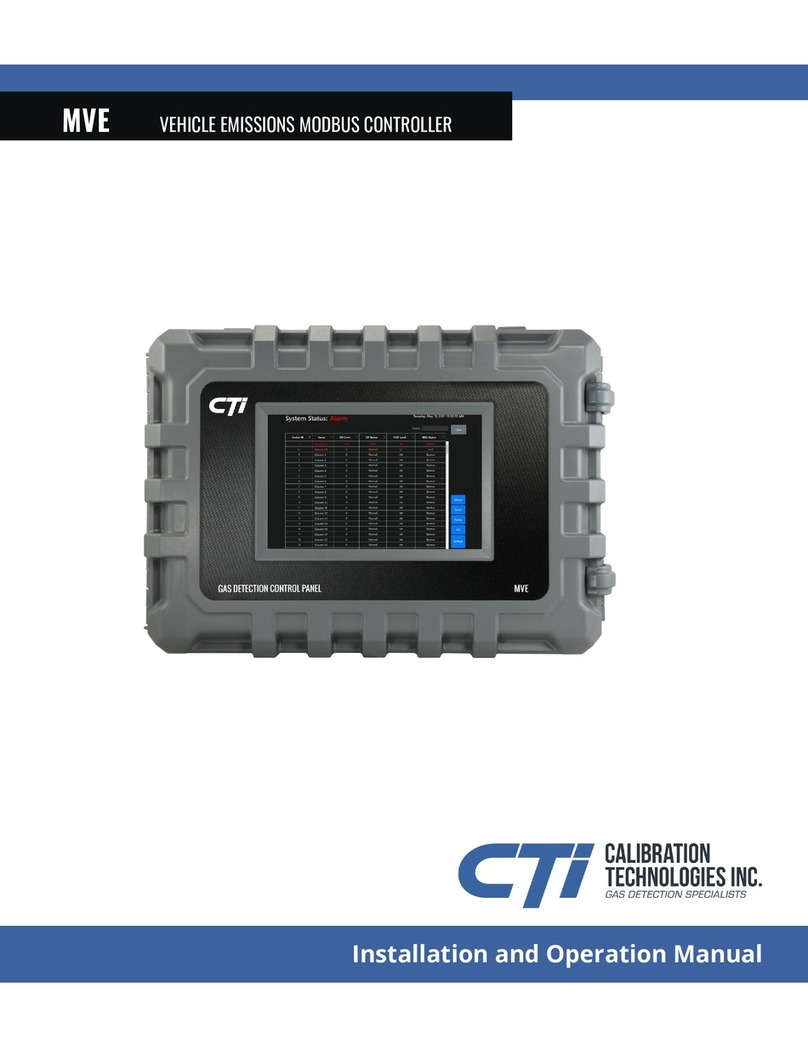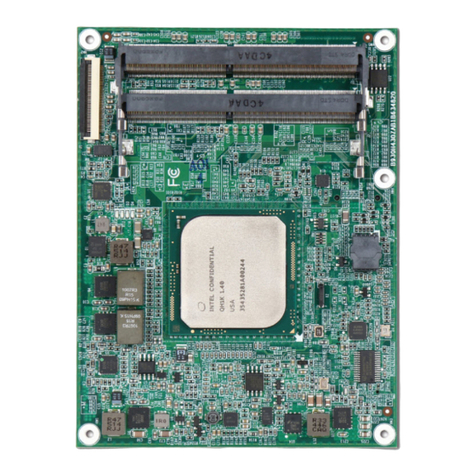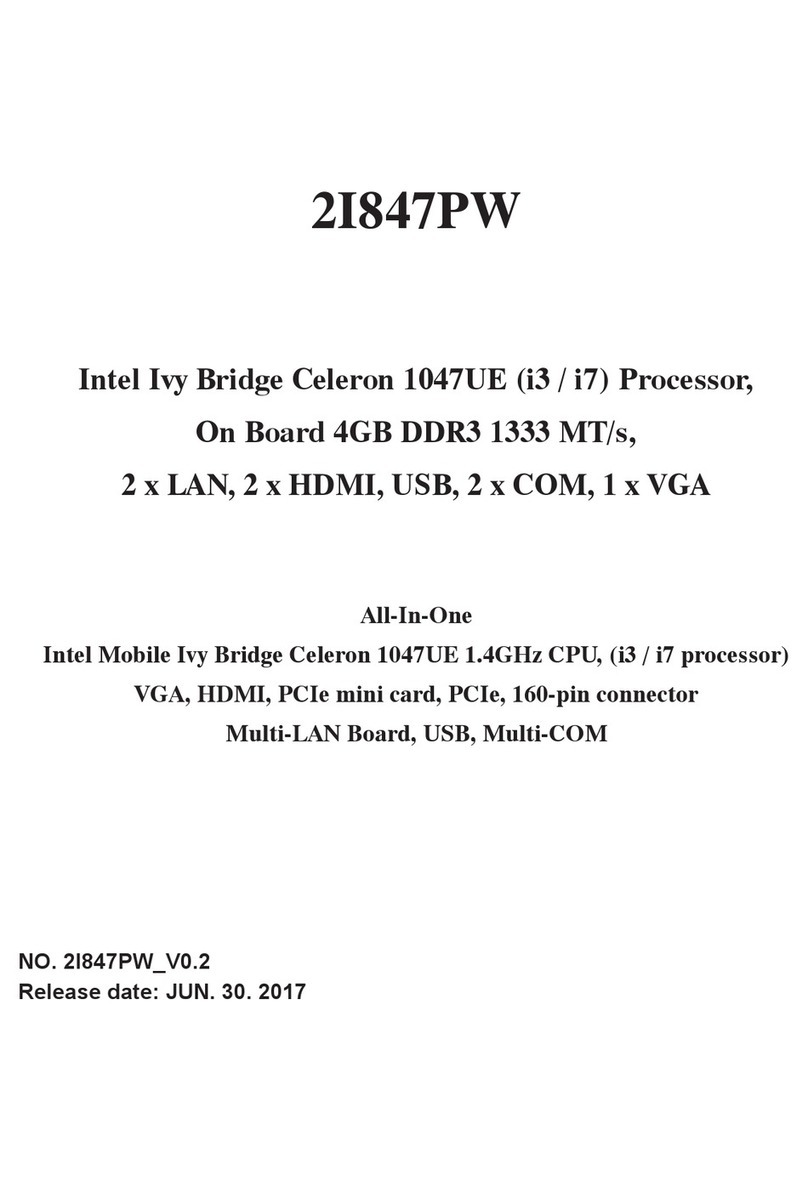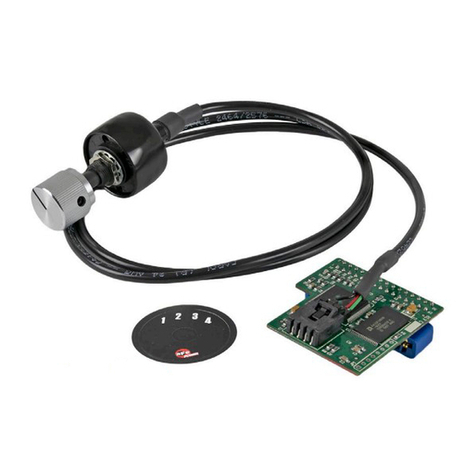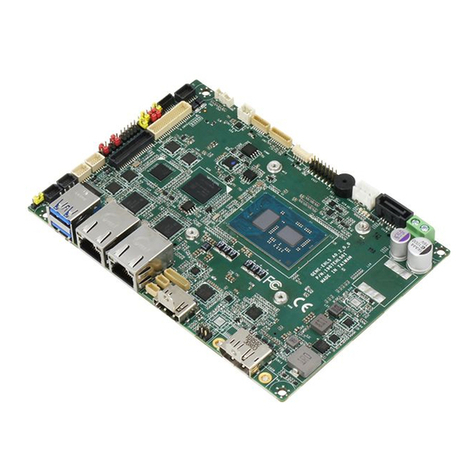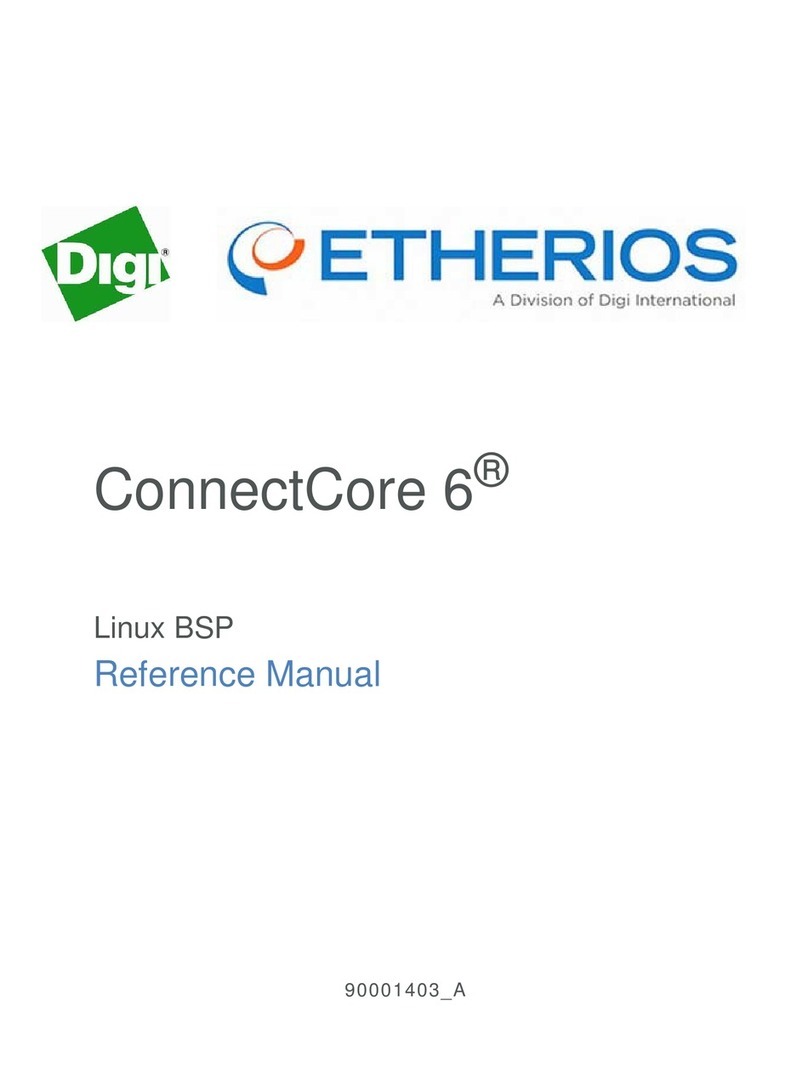Infineon TLE9262BQXV33 User manual

Data Sheet 1 Rev. 1.00
www.infineon.com 2017-07-31
TLE9262BQXV33
System Basis Chip
Mid-Range+ System Basis Chip Family
Quality Requirement Category: Automotive
Features
• Two integrated Low-Drop Voltage Regulators: Main regulator (5 V or 3.3 V
up to 250 mA) and auxiliary regulator (5 V up to 100 mA) with off-board
usage protection
• Voltage regulator (5 V, 3.3 V or 1.8 V) with external PNP transistor configurable for off-board usage or for
load sharing
• 1 high-speed CAN transceiver supporting FD communication up to 5 Mbit/s featuring CAN Partial
Networking & CAN FD tolerant mode according to ISO 11898-2:2016 & SAE J2284
• LIN transceiver LIN2.2A/J2602
•4high-sideoutputs7Ωtyp., 2 HV GPIOs, 3 HV wake inputs
• Integrated fail-safe and supervision functions, e.g. fail-safe, watchdog, interrupt- and reset outputs
• 16-bit SPI for configuration and diagnostics
Applications
• Body Control Modules (BMC), Passive keyless entry and start modules, Gateway applications
• Heating, ventilation and air conditioning (HVAC)
• Seat, roof, tailgate, trailer, door and other closure modules
• Light control modules
• Gear shifters and selectors
Description
Body System IC with Integrated Voltage Regulators, Power Management Functions, HS-CAN Transceiver
supporting CAN FD and LIN Transceiver.
Featuring Multiple High-Side Switches and High-Voltage Wake Inputs.
Type Package Marking
TLE9262BQXV33 PG-VQFN-48-31 TLE9262BQXV33

Data Sheet 2 Rev. 1.00
2017-07-31
TLE9262BQXV33
1 Overview . . . . . . . . . . . . . . . . . . . . . . . . . . . . . . . . . . . . . . . . . . . . . . . . . . . . . . . . . . . . . . . . . . . . . . . . 6
2 Block Diagram . . . . . . . . . . . . . . . . . . . . . . . . . . . . . . . . . . . . . . . . . . . . . . . . . . . . . . . . . . . . . . . . . . . 8
3 Pin Configuration . . . . . . . . . . . . . . . . . . . . . . . . . . . . . . . . . . . . . . . . . . . . . . . . . . . . . . . . . . . . . . . . . 9
3.1 Pin Assignment . . . . . . . . . . . . . . . . . . . . . . . . . . . . . . . . . . . . . . . . . . . . . . . . . . . . . . . . . . . . . . . . . . . . . . . . . . . 9
3.2 Pin Definitions and Functions . . . . . . . . . . . . . . . . . . . . . . . . . . . . . . . . . . . . . . . . . . . . . . . . . . . . . . . . . . . . . 10
3.3 Hints for Unused Pins . . . . . . . . . . . . . . . . . . . . . . . . . . . . . . . . . . . . . . . . . . . . . . . . . . . . . . . . . . . . . . . . . . . . 12
3.4 Hints for Alternate Pin Functions . . . . . . . . . . . . . . . . . . . . . . . . . . . . . . . . . . . . . . . . . . . . . . . . . . . . . . . . . . 12
4 General Product Characteristics . . . . . . . . . . . . . . . . . . . . . . . . . . . . . . . . . . . . . . . . . . . . . . . . . . . 13
4.1 Absolute Maximum Ratings . . . . . . . . . . . . . . . . . . . . . . . . . . . . . . . . . . . . . . . . . . . . . . . . . . . . . . . . . . . . . . . 13
4.2 Functional Range . . . . . . . . . . . . . . . . . . . . . . . . . . . . . . . . . . . . . . . . . . . . . . . . . . . . . . . . . . . . . . . . . . . . . . . . 15
4.3 Thermal Resistance . . . . . . . . . . . . . . . . . . . . . . . . . . . . . . . . . . . . . . . . . . . . . . . . . . . . . . . . . . . . . . . . . . . . . . 16
4.4 Current Consumption . . . . . . . . . . . . . . . . . . . . . . . . . . . . . . . . . . . . . . . . . . . . . . . . . . . . . . . . . . . . . . . . . . . . 17
5 System Features . . . . . . . . . . . . . . . . . . . . . . . . . . . . . . . . . . . . . . . . . . . . . . . . . . . . . . . . . . . . . . . . 21
5.1 Block Description of State Machine . . . . . . . . . . . . . . . . . . . . . . . . . . . . . . . . . . . . . . . . . . . . . . . . . . . . . . . 22
5.1.1 Device Configuration and SBC Init Mode . . . . . . . . . . . . . . . . . . . . . . . . . . . . . . . . . . . . . . . . . . . . . . . . . 23
5.1.1.1 Device Configuration . . . . . . . . . . . . . . . . . . . . . . . . . . . . . . . . . . . . . . . . . . . . . . . . . . . . . . . . . . . . . . . . . 23
5.1.1.2 SBC Init Mode . . . . . . . . . . . . . . . . . . . . . . . . . . . . . . . . . . . . . . . . . . . . . . . . . . . . . . . . . . . . . . . . . . . . . . . 26
5.1.2 SBC Normal Mode . . . . . . . . . . . . . . . . . . . . . . . . . . . . . . . . . . . . . . . . . . . . . . . . . . . . . . . . . . . . . . . . . . . . . . 27
5.1.3 SBC Stop Mode . . . . . . . . . . . . . . . . . . . . . . . . . . . . . . . . . . . . . . . . . . . . . . . . . . . . . . . . . . . . . . . . . . . . . . . . 28
5.1.4 SBC Sleep Mode . . . . . . . . . . . . . . . . . . . . . . . . . . . . . . . . . . . . . . . . . . . . . . . . . . . . . . . . . . . . . . . . . . . . . . . 29
5.1.5 SBC Restart Mode . . . . . . . . . . . . . . . . . . . . . . . . . . . . . . . . . . . . . . . . . . . . . . . . . . . . . . . . . . . . . . . . . . . . . . 30
5.1.6 SBC Fail-Safe Mode . . . . . . . . . . . . . . . . . . . . . . . . . . . . . . . . . . . . . . . . . . . . . . . . . . . . . . . . . . . . . . . . . . . . 31
5.1.7 SBC Development Mode . . . . . . . . . . . . . . . . . . . . . . . . . . . . . . . . . . . . . . . . . . . . . . . . . . . . . . . . . . . . . . . . 32
5.2 Wake Features . . . . . . . . . . . . . . . . . . . . . . . . . . . . . . . . . . . . . . . . . . . . . . . . . . . . . . . . . . . . . . . . . . . . . . . . . . 34
5.2.1 Cyclic Sense . . . . . . . . . . . . . . . . . . . . . . . . . . . . . . . . . . . . . . . . . . . . . . . . . . . . . . . . . . . . . . . . . . . . . . . . . . . 34
5.2.1.1 Configuration and Operation of Cyclic Sense . . . . . . . . . . . . . . . . . . . . . . . . . . . . . . . . . . . . . . . . . . . 35
5.2.1.2 Cyclic Sense in Low Power Mode . . . . . . . . . . . . . . . . . . . . . . . . . . . . . . . . . . . . . . . . . . . . . . . . . . . . . . 38
5.2.2 Cyclic Wake . . . . . . . . . . . . . . . . . . . . . . . . . . . . . . . . . . . . . . . . . . . . . . . . . . . . . . . . . . . . . . . . . . . . . . . . . . . 39
5.2.3 Internal Timer . . . . . . . . . . . . . . . . . . . . . . . . . . . . . . . . . . . . . . . . . . . . . . . . . . . . . . . . . . . . . . . . . . . . . . . . . 40
5.3 Supervision Features . . . . . . . . . . . . . . . . . . . . . . . . . . . . . . . . . . . . . . . . . . . . . . . . . . . . . . . . . . . . . . . . . . . . . 40
6 Voltage Regulator 1 . . . . . . . . . . . . . . . . . . . . . . . . . . . . . . . . . . . . . . . . . . . . . . . . . . . . . . . . . . . . . . 41
6.1 Block Description . . . . . . . . . . . . . . . . . . . . . . . . . . . . . . . . . . . . . . . . . . . . . . . . . . . . . . . . . . . . . . . . . . . . . . . . 41
6.2 Functional Description . . . . . . . . . . . . . . . . . . . . . . . . . . . . . . . . . . . . . . . . . . . . . . . . . . . . . . . . . . . . . . . . . . . 42
6.3 Electrical Characteristics . . . . . . . . . . . . . . . . . . . . . . . . . . . . . . . . . . . . . . . . . . . . . . . . . . . . . . . . . . . . . . . . . 43
7 Voltage Regulator 2 . . . . . . . . . . . . . . . . . . . . . . . . . . . . . . . . . . . . . . . . . . . . . . . . . . . . . . . . . . . . . . 46
7.1 Block Description . . . . . . . . . . . . . . . . . . . . . . . . . . . . . . . . . . . . . . . . . . . . . . . . . . . . . . . . . . . . . . . . . . . . . . . . 46
7.2 Functional Description . . . . . . . . . . . . . . . . . . . . . . . . . . . . . . . . . . . . . . . . . . . . . . . . . . . . . . . . . . . . . . . . . . . 47
7.2.1 Short to Battery Protection . . . . . . . . . . . . . . . . . . . . . . . . . . . . . . . . . . . . . . . . . . . . . . . . . . . . . . . . . . . . . 47
7.3 Electrical Characteristics . . . . . . . . . . . . . . . . . . . . . . . . . . . . . . . . . . . . . . . . . . . . . . . . . . . . . . . . . . . . . . . . . 48
8 External Voltage Regulator 3 . . . . . . . . . . . . . . . . . . . . . . . . . . . . . . . . . . . . . . . . . . . . . . . . . . . . . . 51
8.1 Block Description . . . . . . . . . . . . . . . . . . . . . . . . . . . . . . . . . . . . . . . . . . . . . . . . . . . . . . . . . . . . . . . . . . . . . . . . 51
8.2 Functional Description . . . . . . . . . . . . . . . . . . . . . . . . . . . . . . . . . . . . . . . . . . . . . . . . . . . . . . . . . . . . . . . . . . . 52
8.2.1 External Voltage Regulator as Independent Voltage Regulator . . . . . . . . . . . . . . . . . . . . . . . . . . . . . . 53
8.2.2 External Voltage Regulator in Load Sharing Mode . . . . . . . . . . . . . . . . . . . . . . . . . . . . . . . . . . . . . . . . . 54
Table of Contents

Data Sheet 3 Rev. 1.00
2017-07-31
TLE9262BQXV33
8.3 External Components . . . . . . . . . . . . . . . . . . . . . . . . . . . . . . . . . . . . . . . . . . . . . . . . . . . . . . . . . . . . . . . . . . . . 55
8.4 Calculation of RSHUNT . . . . . . . . . . . . . . . . . . . . . . . . . . . . . . . . . . . . . . . . . . . . . . . . . . . . . . . . . . . . . . . . . . . . . 56
8.5 Unused Pins . . . . . . . . . . . . . . . . . . . . . . . . . . . . . . . . . . . . . . . . . . . . . . . . . . . . . . . . . . . . . . . . . . . . . . . . . . . . . 56
8.6 Electrical Characteristics . . . . . . . . . . . . . . . . . . . . . . . . . . . . . . . . . . . . . . . . . . . . . . . . . . . . . . . . . . . . . . . . . 57
9 High-Side Switch . . . . . . . . . . . . . . . . . . . . . . . . . . . . . . . . . . . . . . . . . . . . . . . . . . . . . . . . . . . . . . . . 62
9.1 Block Description . . . . . . . . . . . . . . . . . . . . . . . . . . . . . . . . . . . . . . . . . . . . . . . . . . . . . . . . . . . . . . . . . . . . . . . . 62
9.2 Functional Description . . . . . . . . . . . . . . . . . . . . . . . . . . . . . . . . . . . . . . . . . . . . . . . . . . . . . . . . . . . . . . . . . . . 62
9.2.1 Over- and Undervoltage Switch Off . . . . . . . . . . . . . . . . . . . . . . . . . . . . . . . . . . . . . . . . . . . . . . . . . . . . . . 63
9.2.2 Overcurrent Detection and Switch Off . . . . . . . . . . . . . . . . . . . . . . . . . . . . . . . . . . . . . . . . . . . . . . . . . . . . 63
9.2.3 Open Load Detection . . . . . . . . . . . . . . . . . . . . . . . . . . . . . . . . . . . . . . . . . . . . . . . . . . . . . . . . . . . . . . . . . . . 63
9.2.4 HSx Operation in Different SBC Modes . . . . . . . . . . . . . . . . . . . . . . . . . . . . . . . . . . . . . . . . . . . . . . . . . . . 63
9.2.5 PWM and Timer Function . . . . . . . . . . . . . . . . . . . . . . . . . . . . . . . . . . . . . . . . . . . . . . . . . . . . . . . . . . . . . . . 64
9.3 Electrical Characteristics . . . . . . . . . . . . . . . . . . . . . . . . . . . . . . . . . . . . . . . . . . . . . . . . . . . . . . . . . . . . . . . . . 65
10 High Speed CAN Transceiver . . . . . . . . . . . . . . . . . . . . . . . . . . . . . . . . . . . . . . . . . . . . . . . . . . . . . . 66
10.1 Block Description . . . . . . . . . . . . . . . . . . . . . . . . . . . . . . . . . . . . . . . . . . . . . . . . . . . . . . . . . . . . . . . . . . . . . . . . 66
10.2 Functional Description . . . . . . . . . . . . . . . . . . . . . . . . . . . . . . . . . . . . . . . . . . . . . . . . . . . . . . . . . . . . . . . . . . . 66
10.2.1 CAN OFF Mode . . . . . . . . . . . . . . . . . . . . . . . . . . . . . . . . . . . . . . . . . . . . . . . . . . . . . . . . . . . . . . . . . . . . . . . . . 68
10.2.2 CAN Normal Mode . . . . . . . . . . . . . . . . . . . . . . . . . . . . . . . . . . . . . . . . . . . . . . . . . . . . . . . . . . . . . . . . . . . . . 68
10.2.3 CAN Receive Only Mode . . . . . . . . . . . . . . . . . . . . . . . . . . . . . . . . . . . . . . . . . . . . . . . . . . . . . . . . . . . . . . . . 69
10.2.4 CAN Wake Capable Mode . . . . . . . . . . . . . . . . . . . . . . . . . . . . . . . . . . . . . . . . . . . . . . . . . . . . . . . . . . . . . . . 69
10.2.5 TXD Time-out Feature . . . . . . . . . . . . . . . . . . . . . . . . . . . . . . . . . . . . . . . . . . . . . . . . . . . . . . . . . . . . . . . . . . 72
10.2.6 Bus Dominant Clamping . . . . . . . . . . . . . . . . . . . . . . . . . . . . . . . . . . . . . . . . . . . . . . . . . . . . . . . . . . . . . . . . 72
10.2.7 Undervoltage Detection . . . . . . . . . . . . . . . . . . . . . . . . . . . . . . . . . . . . . . . . . . . . . . . . . . . . . . . . . . . . . . . . 72
10.3 Electrical Characteristics . . . . . . . . . . . . . . . . . . . . . . . . . . . . . . . . . . . . . . . . . . . . . . . . . . . . . . . . . . . . . . . . . 73
11 LIN Transceiver . . . . . . . . . . . . . . . . . . . . . . . . . . . . . . . . . . . . . . . . . . . . . . . . . . . . . . . . . . . . . . . . . 80
11.1 Block Description . . . . . . . . . . . . . . . . . . . . . . . . . . . . . . . . . . . . . . . . . . . . . . . . . . . . . . . . . . . . . . . . . . . . . . . . 80
11.1.1 LIN Specifications . . . . . . . . . . . . . . . . . . . . . . . . . . . . . . . . . . . . . . . . . . . . . . . . . . . . . . . . . . . . . . . . . . . . . . 80
11.2 Functional Description . . . . . . . . . . . . . . . . . . . . . . . . . . . . . . . . . . . . . . . . . . . . . . . . . . . . . . . . . . . . . . . . . . . 81
11.2.1 LIN OFF Mode . . . . . . . . . . . . . . . . . . . . . . . . . . . . . . . . . . . . . . . . . . . . . . . . . . . . . . . . . . . . . . . . . . . . . . . . . . 81
11.2.2 LIN Normal Mode . . . . . . . . . . . . . . . . . . . . . . . . . . . . . . . . . . . . . . . . . . . . . . . . . . . . . . . . . . . . . . . . . . . . . . 82
11.2.3 LIN Receive Only Mode . . . . . . . . . . . . . . . . . . . . . . . . . . . . . . . . . . . . . . . . . . . . . . . . . . . . . . . . . . . . . . . . . 82
11.2.4 LIN Wake Capable Mode . . . . . . . . . . . . . . . . . . . . . . . . . . . . . . . . . . . . . . . . . . . . . . . . . . . . . . . . . . . . . . . . 83
11.2.5 TXD Time-out Feature . . . . . . . . . . . . . . . . . . . . . . . . . . . . . . . . . . . . . . . . . . . . . . . . . . . . . . . . . . . . . . . . . . 84
11.2.6 Bus Dominant Clamping . . . . . . . . . . . . . . . . . . . . . . . . . . . . . . . . . . . . . . . . . . . . . . . . . . . . . . . . . . . . . . . . 84
11.2.7 Undervoltage Detection . . . . . . . . . . . . . . . . . . . . . . . . . . . . . . . . . . . . . . . . . . . . . . . . . . . . . . . . . . . . . . . . 84
11.2.8 Slope Selection . . . . . . . . . . . . . . . . . . . . . . . . . . . . . . . . . . . . . . . . . . . . . . . . . . . . . . . . . . . . . . . . . . . . . . . . 85
11.2.9 Flash Programming via LIN . . . . . . . . . . . . . . . . . . . . . . . . . . . . . . . . . . . . . . . . . . . . . . . . . . . . . . . . . . . . . 85
11.3 Electrical Characteristics . . . . . . . . . . . . . . . . . . . . . . . . . . . . . . . . . . . . . . . . . . . . . . . . . . . . . . . . . . . . . . . . . 86
12 Wake and Voltage Monitoring Inputs . . . . . . . . . . . . . . . . . . . . . . . . . . . . . . . . . . . . . . . . . . . . . . . 91
12.1 Block Description . . . . . . . . . . . . . . . . . . . . . . . . . . . . . . . . . . . . . . . . . . . . . . . . . . . . . . . . . . . . . . . . . . . . . . . . 91
12.2 Functional Description . . . . . . . . . . . . . . . . . . . . . . . . . . . . . . . . . . . . . . . . . . . . . . . . . . . . . . . . . . . . . . . . . . . 92
12.2.1 Wake Input Configuration . . . . . . . . . . . . . . . . . . . . . . . . . . . . . . . . . . . . . . . . . . . . . . . . . . . . . . . . . . . . . . . 93
12.2.2 Alternate Measurement Function with WK1 and WK2 . . . . . . . . . . . . . . . . . . . . . . . . . . . . . . . . . . . . . . 95
12.2.2.1 Block Description . . . . . . . . . . . . . . . . . . . . . . . . . . . . . . . . . . . . . . . . . . . . . . . . . . . . . . . . . . . . . . . . . . . . 95
12.2.2.2 Functional Description . . . . . . . . . . . . . . . . . . . . . . . . . . . . . . . . . . . . . . . . . . . . . . . . . . . . . . . . . . . . . . . 95
12.3 Electrical Characteristics . . . . . . . . . . . . . . . . . . . . . . . . . . . . . . . . . . . . . . . . . . . . . . . . . . . . . . . . . . . . . . . . . 96

Data Sheet 4 Rev. 1.00
2017-07-31
TLE9262BQXV33
13 Interrupt Function . . . . . . . . . . . . . . . . . . . . . . . . . . . . . . . . . . . . . . . . . . . . . . . . . . . . . . . . . . . . . . . 98
13.1 Block and Functional Description . . . . . . . . . . . . . . . . . . . . . . . . . . . . . . . . . . . . . . . . . . . . . . . . . . . . . . . . . 98
13.2 Electrical Characteristics . . . . . . . . . . . . . . . . . . . . . . . . . . . . . . . . . . . . . . . . . . . . . . . . . . . . . . . . . . . . . . . . 100
14 Fail Outputs . . . . . . . . . . . . . . . . . . . . . . . . . . . . . . . . . . . . . . . . . . . . . . . . . . . . . . . . . . . . . . . . . . . 101
14.1 Block and Functional Description . . . . . . . . . . . . . . . . . . . . . . . . . . . . . . . . . . . . . . . . . . . . . . . . . . . . . . . . 101
14.1.1 General Purpose I/O Functionality of FO2 and FO3 as Alternate Function . . . . . . . . . . . . . . . . . . . 102
14.2 Electrical Characteristics . . . . . . . . . . . . . . . . . . . . . . . . . . . . . . . . . . . . . . . . . . . . . . . . . . . . . . . . . . . . . . . . 104
15 Supervision Functions . . . . . . . . . . . . . . . . . . . . . . . . . . . . . . . . . . . . . . . . . . . . . . . . . . . . . . . . . . 106
15.1 Reset Function . . . . . . . . . . . . . . . . . . . . . . . . . . . . . . . . . . . . . . . . . . . . . . . . . . . . . . . . . . . . . . . . . . . . . . . . . 106
15.1.1 Reset Output Description . . . . . . . . . . . . . . . . . . . . . . . . . . . . . . . . . . . . . . . . . . . . . . . . . . . . . . . . . . . . . . 106
15.1.2 Soft Reset Description . . . . . . . . . . . . . . . . . . . . . . . . . . . . . . . . . . . . . . . . . . . . . . . . . . . . . . . . . . . . . . . . . 107
15.2 Watchdog Function . . . . . . . . . . . . . . . . . . . . . . . . . . . . . . . . . . . . . . . . . . . . . . . . . . . . . . . . . . . . . . . . . . . . . 108
15.2.1 Time-Out Watchdog . . . . . . . . . . . . . . . . . . . . . . . . . . . . . . . . . . . . . . . . . . . . . . . . . . . . . . . . . . . . . . . . . . . 109
15.2.2 Window Watchdog . . . . . . . . . . . . . . . . . . . . . . . . . . . . . . . . . . . . . . . . . . . . . . . . . . . . . . . . . . . . . . . . . . . . 110
15.2.3 Watchdog Setting Check Sum . . . . . . . . . . . . . . . . . . . . . . . . . . . . . . . . . . . . . . . . . . . . . . . . . . . . . . . . . . 111
15.2.4 Watchdog during SBC Stop Mode . . . . . . . . . . . . . . . . . . . . . . . . . . . . . . . . . . . . . . . . . . . . . . . . . . . . . . . 112
15.2.5 Watchdog Start in SBC Stop Mode due to Bus Wake . . . . . . . . . . . . . . . . . . . . . . . . . . . . . . . . . . . . . . 113
15.3 VS Power On Reset . . . . . . . . . . . . . . . . . . . . . . . . . . . . . . . . . . . . . . . . . . . . . . . . . . . . . . . . . . . . . . . . . . . . . . 114
15.4 Undervoltage VS and VSHS . . . . . . . . . . . . . . . . . . . . . . . . . . . . . . . . . . . . . . . . . . . . . . . . . . . . . . . . . . . . . . 115
15.5 Overvoltage VSHS . . . . . . . . . . . . . . . . . . . . . . . . . . . . . . . . . . . . . . . . . . . . . . . . . . . . . . . . . . . . . . . . . . . . . . 115
15.6 VCC1 Over-/ Undervoltage and Undervoltage Prewarning . . . . . . . . . . . . . . . . . . . . . . . . . . . . . . . . . . . 115
15.6.1 VCC1 Undervoltage and Undervoltage Prewarning . . . . . . . . . . . . . . . . . . . . . . . . . . . . . . . . . . . . . . . 115
15.6.2 VCC1 Overvoltage . . . . . . . . . . . . . . . . . . . . . . . . . . . . . . . . . . . . . . . . . . . . . . . . . . . . . . . . . . . . . . . . . . . . . 116
15.7 VCC1 Short Circuit and VCC3 Diagnostics . . . . . . . . . . . . . . . . . . . . . . . . . . . . . . . . . . . . . . . . . . . . . . . . . . 117
15.8 VCC2 Undervoltage and VCAN Undervoltage . . . . . . . . . . . . . . . . . . . . . . . . . . . . . . . . . . . . . . . . . . . . . . 117
15.9 Thermal Protection . . . . . . . . . . . . . . . . . . . . . . . . . . . . . . . . . . . . . . . . . . . . . . . . . . . . . . . . . . . . . . . . . . . . . 118
15.9.1 Individual Thermal Shutdown . . . . . . . . . . . . . . . . . . . . . . . . . . . . . . . . . . . . . . . . . . . . . . . . . . . . . . . . . 118
15.9.2 Temperature Prewarning . . . . . . . . . . . . . . . . . . . . . . . . . . . . . . . . . . . . . . . . . . . . . . . . . . . . . . . . . . . . . . 119
15.9.3 SBC Thermal Shutdown . . . . . . . . . . . . . . . . . . . . . . . . . . . . . . . . . . . . . . . . . . . . . . . . . . . . . . . . . . . . . . . 119
15.10 Electrical Characteristics . . . . . . . . . . . . . . . . . . . . . . . . . . . . . . . . . . . . . . . . . . . . . . . . . . . . . . . . . . . . . . . . 120
16 Serial Peripheral Interface . . . . . . . . . . . . . . . . . . . . . . . . . . . . . . . . . . . . . . . . . . . . . . . . . . . . . . . 124
16.1 SPI Block Description . . . . . . . . . . . . . . . . . . . . . . . . . . . . . . . . . . . . . . . . . . . . . . . . . . . . . . . . . . . . . . . . . . . 124
16.2 Failure Signalization in the SPI Data Output . . . . . . . . . . . . . . . . . . . . . . . . . . . . . . . . . . . . . . . . . . . . . . . 125
16.3 SPI Programming . . . . . . . . . . . . . . . . . . . . . . . . . . . . . . . . . . . . . . . . . . . . . . . . . . . . . . . . . . . . . . . . . . . . . . . 127
16.4 SPI Bit Mapping . . . . . . . . . . . . . . . . . . . . . . . . . . . . . . . . . . . . . . . . . . . . . . . . . . . . . . . . . . . . . . . . . . . . . . . . 129
16.5 SPI Control Registers . . . . . . . . . . . . . . . . . . . . . . . . . . . . . . . . . . . . . . . . . . . . . . . . . . . . . . . . . . . . . . . . . . . . 132
16.5.1 General Control Registers . . . . . . . . . . . . . . . . . . . . . . . . . . . . . . . . . . . . . . . . . . . . . . . . . . . . . . . . . . . . . . 133
16.6 SPI Status Information Registers . . . . . . . . . . . . . . . . . . . . . . . . . . . . . . . . . . . . . . . . . . . . . . . . . . . . . . . . . 151
16.6.1 General Status Registers . . . . . . . . . . . . . . . . . . . . . . . . . . . . . . . . . . . . . . . . . . . . . . . . . . . . . . . . . . . . . . . 152
16.6.2 Family and Product Information Register . . . . . . . . . . . . . . . . . . . . . . . . . . . . . . . . . . . . . . . . . . . . . . . . 162
16.7 Electrical Characteristics . . . . . . . . . . . . . . . . . . . . . . . . . . . . . . . . . . . . . . . . . . . . . . . . . . . . . . . . . . . . . . . . 163
17 Application Information . . . . . . . . . . . . . . . . . . . . . . . . . . . . . . . . . . . . . . . . . . . . . . . . . . . . . . . . . 165
17.1 Application Diagram . . . . . . . . . . . . . . . . . . . . . . . . . . . . . . . . . . . . . . . . . . . . . . . . . . . . . . . . . . . . . . . . . . . . 165
17.2 ESD Tests . . . . . . . . . . . . . . . . . . . . . . . . . . . . . . . . . . . . . . . . . . . . . . . . . . . . . . . . . . . . . . . . . . . . . . . . . . . . . . 170
17.3 Thermal Behavior of Package . . . . . . . . . . . . . . . . . . . . . . . . . . . . . . . . . . . . . . . . . . . . . . . . . . . . . . . . . . . . 171
18 Package Outlines . . . . . . . . . . . . . . . . . . . . . . . . . . . . . . . . . . . . . . . . . . . . . . . . . . . . . . . . . . . . . . . 173

Data Sheet 5 Rev. 1.00
2017-07-31
TLE9262BQXV33
19 Revision History . . . . . . . . . . . . . . . . . . . . . . . . . . . . . . . . . . . . . . . . . . . . . . . . . . . . . . . . . . . . . . . . 174

Data Sheet 6 Rev. 1.00
2017-07-31
TLE9262BQXV33
Overview
1 Overview
Scalable System Basis Chip Family
• Product family with various products for complete scalable application coverage.
• Dedicated Data Sheets are available for the different product variants
• Complete compatibility (hardware and software) across the family
• TLE9263 with 2 LIN transceivers, 3 voltage regulators
• TLE9262 with 1 LIN transceiver, 3 voltage regulators
• TLE9261 without LIN transceivers, 3 voltage regulators
• Product variants for 5V (TLE926xQX) and 3.3V (TLE926xQXV33) output voltage for main voltage regulator
• CAN Partial Networking variants for 5V (TLE926x-3QX) and 3.3V (TLE926x-3QXV33) output voltage
Device Description
The TLE9262BQXV33 is a monolithic integrated circuit in an exposed pad VQFN-48 (7mm x 7mm) power
package with Lead Tip Inspection (LTI) feature to support Automatic Optical Inspection (AOI).
The device is designed for various CAN-LIN automotive applications as main supply for the microcontroller
and as interface for a LIN and CAN bus network.
To support these applications, the System Basis Chip (SBC) provides the main functions, such as a 3.3V low-
dropout voltage regulator (LDO) for e.g. a microcontroller supply, another 5V low-dropout voltage regulator
with off-board protection for e.g. sensor supply, another 3.3V/1.8V regulator to drive an external PNP
transistor, which can be used as an independent supply for off-board usage or in load sharing configuration
with the main regulator VCC1, a HS-CAN transceiver supporting CAN FD and LIN transceiver for data
transmission, high-side switches with embedded protective functions and a 16-bit Serial Peripheral Interface
(SPI) to control and monitor the device. Also implemented are a configurable timeout / window watchdog
circuit with a reset feature, three Fail Outputs and an undervoltage reset feature.
The device offers low-power modes in order to minimize current consumption on applications that are
connected permanently to the battery. A wake-up from the low-power mode is possible via a message on the
buses, via the bi-level sensitive monitoring/wake-up inputs as well as via cyclic wake.
The device is designed to withstand the severe conditions of automotive applications.

Data Sheet 7 Rev. 1.00
2017-07-31
TLE9262BQXV33
Overview
Product Features
• Very low quiescent current consumption in Stop- and Sleep Mode
• Periodic Cyclic Wake in SBC Normal- and Stop Mode
• Periodic Cyclic Sense in SBC Normal-, Stop- and Sleep Mode
• Low-Drop Voltage Regulator 3.3V, 250mA
• Low-Drop Voltage Regulator 5V, 100mA, protected features for off-board usage
•Low-Drop Voltage Regulator, driving an external PNP transistor - 3.3V in load sharing configuration or
3.3V/1.8V in stand-alone configuration, protected features for off-board usage. Current limitation by shunt
resistor (up to 350mA with 470mexternal shunt resistor) in stand-alone configuration
• High-Speed CAN Transceiver:
– fully compliant to HS-CAN standard ISO 11898-2:2016
– supporting CAN FD communication up to 5 Mbps
• LIN Transceiver LIN 2.2a, J2602 with configurable TXD timeout feature and LIN Flash Mode
• Fully compliant to “Hardware Requirements for LIN, CAN and FlexRay Interfaces in Automotive
Applications” Revision 1.3, 2012-05-04
•FourHigh-SideOutputs7Ωtyp.
• Dedicated supply pin for High-Side Outputs
•Two General Purpose High-VoltageIn- and Outputs (GPIOs) configurable as add. Fail Outputs, Wake Inputs,
Low-Side switches or High-Side switches
• Three universal High-Voltage Wake Inputs for voltage level monitoring
• Alternate High-Voltage Measurement Function, e.g. for battery voltage sensing
• Configurable wake-up sources
• Reset Output
• Configurable timeout and window watchdog
•Up to three Fail Outputs (depending on configuration)
• Overtemperature and short circuit protection feature
• Wide supply input voltage and temperature range
• Software compatible to all SBC families TLE926x and TLE927x
• Green Product (RoHS compliant) & AEC Qualified
• PG-VQFN-48 leadless exposed-pad power package with Lead Tip Inspection (LTI) feature to support
Automatic Optical Inspection (AOI)

Data Sheet 8 Rev. 1.00
2017-07-31
TLE9262BQXV33
Block Diagram
2 Block Diagram
Figure 1 Block Diagram
V
CC1
SPI
Interrupt
Control
SBC
STATE
MACHINE
SDI
SDO
CLK
CSN
VCC1
CAN cell
LIN cell
Window Watchdog
WK
TXDLIN 1
RXDLIN 1
LIN 1
TXDCAN
RXDCAN
VCAN
CANH
CANL
WK1
RESET
GENERATOR
INT
GND
WAKE
REGISTER
VS
V
S
Fail Safe
RO
FO3/TEST
FO2
FO1
V
CC2
VCC2
High Side
HS2
HS3
HS4
HS1
WK
WK2
WK
WK3
V
CC3
VCC3REF
VCC3SH
VCC3B
VSHS VS
VSHS
Al ter nati v e func ti on
for F O 2/ 3: GPIO 1 /2
Alternative
func ti on f or W K 1 /2:
Voltage m easur em ent

Data Sheet 9 Rev. 1.00
2017-07-31
TLE9262BQXV33
Pin Configuration
3 Pin Configuration
3.1 Pin Assignment
Figure 2 Pin Configuration
TLE9262
PG-VQFN-48
TLE9262.vsd
1GND
2 n.c.
3 VCC3REF
4 VCC3B
5 VCC3SH
6 n.c.
7 n.c.
8HS1
9 HS2
10 HS3
11 HS4
12 n.c.
FO3/TEST 48
FO2 47
n.c. 46
n.c. 45
N.U. 44
GND 43
LIN1 42
n.c. 41
CANH 40
CANL 39
GND 38
VCAN 37
13 VSHS
14 VS
15 VS
16 n.c.
17 VCC1
18 VCC2
19 n.c.
20 GND
21 FO1
22 WK1
23 WK2
24 WK3
25 N.U.
26 N.U.
27 CLK
28 SDI
29 SDO
30 CSN
31 INT
32 RO
33 TXDLIN1
34 RXDLIN1
35 TXDCAN
36 RXDCAN

Data Sheet 10 Rev. 1.00
2017-07-31
TLE9262BQXV33
Pin Configuration
3.2 Pin Definitions and Functions
Pin Symbol Function
1GND Ground
2n.c. not connected; internally not bonded.
3VCC3REF VCC3REF; Collector connection for external PNP, reference input
4VCC3B VCC3B; Base connection for external PNP
5VCC3SH VCC3SH; Emitter connection for external PNP, shunt connection
6n.c. not connected; internally not bonded.
7n.c. not connected; internally not bonded.
8HS1 High Side Output 1; typ. 7Ω
9HS2 High Side Output 2; typ. 7Ω
10 HS3 High Side Output 3; typ. 7Ω
11 HS4 High Side Output 4; typ. 7Ω
12 n.c not connected; internally not bonded.
13 VSHS Supply Voltage HS, LIN and GPIO1/2 in HS configuration; Supply voltage for
High-Side Switches and LIN modules and respective UV-/OV supervision;
Connected to battery voltage with reverse protection diode and filter
against EMC; connect to VS if separate supply is not needed
14 VS Supply Voltage; Supply voltage for chip internal supply and voltage
regulators; Connected to Battery Voltage with external reverse protection
Diode and Filter against EMC
15 VS Supply Voltage; Supply voltage for chip internal supply and voltage
regulators; Connected to Battery Voltage with external reverse protection
Diode and Filter against EMC
16 n.c. not connected; internally not bonded.
17 VCC1 Voltage Regulator Output 1
18 VCC2 Voltage Regulator Output 2
19 n.c. not connected; internally not bonded.
20 GND GND
21 FO1 Fail Output 1
22 WK1 Wake Input 1; Alternative function: HV-measurement function input pin
(only in combination with WK2, see Chapter 12.2.2)
23 WK2 Wake Input 2; Alternative function: HV-measurement function output pin
(only in combination with WK1, see Chapter 12.2.2)
24 WK3 Wake Input 3
25 N.U. Not Used; Used for internal testing purpose. Do not connect, leave open
26 N.U. Not Used; Used for internal testing purpose. Do not connect, leave open
27 CLK SPI Clock Input
28 SDI SPI Data Input; into SBC (=MOSI)
29 SDO SPI Data Output; out of SBC (=MISO)

Data Sheet 11 Rev. 1.00
2017-07-31
TLE9262BQXV33
Pin Configuration
Note: all VS Pins must be connected to battery potential or insert a reverse polarity diodes where required;
all GND pins as well as the Cooling Tab must be connected to one common GND potential;
note that the tie bars at each package corner are connected to the cooling tab (see also Chapter 18)
30 CSN SPI Chip Select Not Input
31 INT Interrupt Output; used as wake-up flag for microcontroller in SBC Stop or
Normal Mode and for indicating failures. Active low.
During start-up used to set the SBC configuration. External pull-up sets config
1/3, no external pull-up sets config 2/4.
32 RO Reset Output
33 TXDLIN1 Transmit LIN1
34 RXDLIN1 Receive LIN1
35 TXDCAN Transmit CAN
36 RXDCAN Receive CAN
37 VCAN Supply Input; for internal HS-CAN cell
38 GND GND
39 CANL CAN Low Bus Pin
40 CANH CAN High Bus Pin
41 n.c. not connected; internally not bonded.
42 LIN1 LIN1 Bus; Bus line for the LIN interface, according to ISO. 9141 and LIN
specification 2.2 as well as SAE J2602-2.
43 GND Ground
44 N.U. Not Used; Used for internal testing purpose. Do not connect, leave open
45 n.c. not connected; internally not bonded.
46 n.c. not connected; internally not bonded.
47 FO2 Fail Output 2 - Side Indicator; Side indicators 1.25Hz 50% duty cycle output;
Open drain. Active LOW.
Alternative Function: GPIO1; configurable pin as WK, or LS, or HS supplied by
VSHS (default is FO2, see also Chapter 14.1.1)
48 FO3/TEST Fail Output 3 - Pulsed Light Output; Break/rear light 100Hz 20% duty cycle
output;
Open drain. Active LOW
TEST; Connect to GND to activate SBC Development Mode;
Integrated pull-up resistor. Connect to VS with pull-up resistor or leave open for
normal operation.
Alternative Function: GPIO2; configurable pin as WK, or LS, or HS supplied by
VSHS (default is FO3, see also Chapter 14.1.1)
Coolin
g Tab
GND Cooling Tab - Exposed Die Pad; For cooling purposes only, do not use as an
electrical ground.1)
1) The exposed die pad at the bottom of the package allows better power dissipation of heat from the SBC via the PCB.
The exposed die pad is not connected to any active part of the IC an can be left floating or it can be connected to GND
(recommended) for the best EMC performance.
Pin Symbol Function

Data Sheet 12 Rev. 1.00
2017-07-31
TLE9262BQXV33
Pin Configuration
3.3 Hints for Unused Pins
It must be ensured that the correct configurations are also selected, i.e. in case functions are not used that
they are disabled via SPI:
• WK1/2/3: connect to GND and disable WK inputs via SPI
• HSx: leave open
• LINx, RXDLINx, TXDLINx, CANH/L, RXDCAN, TXDCAN: leave all pins open
• RO / FOx: leave open
• INT: leave open
• TEST: connect to GND during power-up to activate SBC Development Mode;
connect to VS or leave open for normal user mode operation
• VCC2: leave open and keep disabled
• VCC3: See Chapter 8.5
• VCAN: connect to VCC1
• n.c.: not connected; internally not bonded; connect to GND
•N.U.: Not Used; Used for internal testing purposes only. Do not connect, leave open, i.e. not connected to
any potential on the board. In case N.U. pins are connected on the board an open bridge has to be foreseen
to avoid external disturbances. The bridge can be shorted by a 0 Ωresistance if signal is needed.
3.4 Hints for Alternate Pin Functions
In case of alternate pin functions, selectable via SPI, it must be ensured that the correct configurations are also
selected via SPI, in case it is not done automatically. Please consult the respective chapter. In addition,
following topics shall be considered:
• WK1..2: The pins can be either used as HV wake / voltage monitoring inputs or for a voltage measurement
function (via bit WK_MEAS). In the second case, the WK1..2 pins shall not be used / assigned for any wake
detection nor cyclic sense functionality, i.e. WK1 and WK2 must be disabled in the register WK_CTRL_2 and
the level information is to be ignored in the register WK_LVL_STAT.
• FO2..3: The pins can also be configured as GPIOs in the GPIO_CTRL register. In this case, the pins shall not
be used for any fail output functionality. The default function after Power on Reset (POR) is FOx.

TLE9262BQXV33
General Product Characteristics
Data Sheet 13 Rev. 1.00, 2017-07-31
4 General Product Characteristics
4.1 Absolute Maximum Ratings
Table 1 Absolute Maximum Ratings1)
Tj= -40 °C to +150 °C; all voltages with respect to ground, positive current flowing into pin
(unless otherwise specified)
Parameter Symbol Values Unit Note /
Test Condition
Number
Min. Typ. Max.
Voltages
Supply Voltage (VS, VSHS) VSx, max -0.3 – 28 V – P_4.1.1
Supply Voltage (VS, VSHS) VSx, max -0.3 – 40 V Load Dump,
max. 400 ms
P_4.1.2
Voltage Regulator 1 VCC1, max -0.3 – 5.5 V – P_4.1.3
Voltage Regulator 2 VCC2, max -0.3 – 28 V VCC2 = 40V for
Load Dump,
max. 400 ms;
P_4.1.4
Voltage Regulator 3
(VCC3REF)
VCC3REF,max -0.3 – 28 V VCC3REF = 40V for
Load Dump,
max. 400 ms;
P_4.1.5
Voltage Regulator 3 (VCC3B) VCC3B,max -0.3 – VS
+ 10
VVCC3B = 40V for
Load Dump,
max. 400 ms;
P_4.1.25
Voltage Regulator 3
(VCC3SH)
VCC3SH,max VS
- 0.30
–VS
+ 0.30
V – P_4.1.26
Wake Inputs WK1..3 VWK, max -0.3 – 40 V – P_4.1.6
Fail Pin FO1 VFO1, max -0.3 – 40 V – P_4.1.7
Fail Pins FO2, FO3/TEST VFO2_3, max -0.3 – VS
+ 0.3
V – P_4.1.23
LINx, CANH, CANL VBUS, max -27 – 40 V – P_4.1.8
Maximum Differential CAN
Bus Voltage
VCAN_Diff, max -5 – 10 V – P_4.1.27
Logic Input Pins (CSN, CLK,
SDI, TXDLINx, TXDCAN)
VI, max -0.3 – VCC1
+ 0.3
V – P_4.1.9
Logic Output Pins (SDO, RO,
INT, RXDLINx, RXDCAN)
VO, max -0.3 – VCC1
+ 0.3
V – P_4.1.10
VCAN Input Voltage VVCAN, max -0.3 – 5.5 V – P_4.1.11
High Side 1...4 VHS, max -0.3 – VSHS
+ 0.3
V – P_4.1.12
Currents
Wake input WK1 IWK1,max 0–500µA
2) P_4.1.13
Wake input WK2 IWK2,max -500 – 0 µA 2) P_4.1.14

TLE9262BQXV33
General Product Characteristics
Data Sheet 14 Rev. 1.00, 2017-07-31
Notes
1. Stresses above the ones listed here may cause permanent damage to the device. Exposure to absolute
maximum rating conditions for extended periods may affect device reliability.
2. Integrated protection functions are designed to prevent IC destruction under fault conditions described in the
data sheet. Fault conditions are considered as “outside” normal operating range. Protection functions are not
designed for continuous repetitive operation.
Temperatures
Junction Temperature Tj-40 – 150 °C – P_4.1.15
Storage Temperature Tstg -55 – 150 °C – P_4.1.16
ESD Susceptibility
ESD Resistivity VESD,11 -2 – 2 kV HBM3) P_4.1.17
ESD Resistivity to GND, HSx VESD,12 -2 – 2 kV HBM3) P_4.1.18
ESD Resistivity to GND,
CANH, CANL, LINx
VESD,13 -8 – 8 kV HBM4)3) P_4.1.19
ESD Resistivity to GND VESD,21 -500 – 500 V CDM5) P_4.1.20
ESD Resistivity Pin 1,
12,13,24,25,36,37,48 (corner
pins) to GND
VESD,22 -750 – 750 V CDM5) P_4.1.21
1) Not subject to production test, specified by design.
2) Applies only if WK1 and WK2 are configured as alternative HV-measurement function
3) ESD susceptibility, HBM according to ANSI/ESDA/JEDEC JS-001 (1.5 k, 100 pF)
4) For ESD “GUN” Resistivity 6KV (according to IEC61000-4-2 “gun test” (150pF, 330)), will be shown in Application
Information and test report will be provided from IBEE
5) ESD susceptibility, Charged Device Model “CDM” EIA/JESD22-C101 or ESDA STM5.3.1
Table 1 Absolute Maximum Ratings1) (cont’d)
Tj= -40 °C to +150 °C; all voltages with respect to ground, positive current flowing into pin
(unless otherwise specified)
Parameter Symbol Values Unit Note /
Test Condition
Number
Min. Typ. Max.

TLE9262BQXV33
General Product Characteristics
Data Sheet 15 Rev. 1.00, 2017-07-31
4.2 Functional Range
Note: Within the functional range the IC operates as described in the circuit description. The electrical
characteristics are specified within the conditions given in the related electrical characteristics table.
Device Behavior Outside of Specified Functional Range:
•28V
< VS,func < 40V: Device will still be functional including the state machine; the specified electrical
characteristics might not be ensured anymore. The regulators VCC1/2/3 are working properly, however, a
thermal shutdown might occur due to high power dissipation. HSx switches might be turned OFF depending
on VSHS_OV configurations. The specified SPI communication speed is ensured; the absolute maximum
ratings are not violated, however the device is not intended for continuous operation of VS >28V. The device
operation at high junction temperatures for long periods might reduce the operating life time;
•18V<VS,LIN <28V: The LIN transceiver is still functional. However, the communication might fail due to out-of-
LIN-spec operation;
•V
SHS,UVD < VS,LIN < 6V: The LIN transceiver is still functional. However, the communication might fail due to out-
of-LIN-spec operation;
•VCAN < 4.75V: The undervoltage bit VCAN_UV will be set in the SPI register BUS_STAT_1 and the transmitter
will be disabled as long as the UV condition is present;
•5.25V
< VCAN < 5.50V: CAN transceiver still functional. However, the communication might fail due to out-of-
spec operation;
•V
POR,f < VS < 5.5V: Device will still be functional; the specified electrical characteristics might not be ensured
anymore.
– The voltage regulators will enter the low-drop operation mode
(applies for VCC3 only if bit VCC3_VS_ UV_OFF is set),
– A VCC1_UV reset could be triggered depending on the Vrtx settings,
– The LIN transmitter will be disabled if VSHS,UVD is reached,
– HSx switch behavior will depend on the respective configuration:
- HS_UV_SD_EN = ‘0’ (default): HSx will be turned OFF for VSHS < VSHS_UV and will stay OFF;
- HS_UV_SD_EN = ‘1’: HSx stays on as long as possible. An unwanted overcurrent shut down may occur.
OC shut down bit set and the respective HSx switch will stay OFF;
– FOx outputs will remain ON if they were enabled before VS > 5.5V,
– The specified SPI communication speed is ensured.
Table 2 Functional Range
Parameter Symbol Values Unit Note /
Test Condition
Number
Min. Typ. Max.
Supply Voltage VS,func VPOR –28V
1) VPOR see
section
Chapter 15.10
1) Including Power-On Reset, Over- and Undervoltage Protection
P_4.2.1
LIN Bus Voltage VS,LIN,func 6–18V
2)
2) Parameter Specification according to LIN 2.2 standard
P_4.2.2
CAN Supply Voltage VCAN,func 4.75 – 5.25 V – P_4.2.3
SPI frequency fSPI ––4MHzseeChapter 16.7
for fSPI,max
P_4.2.4
Junction Temperature Tj-40 – 150 °C – P_4.2.5

TLE9262BQXV33
General Product Characteristics
Data Sheet 16 Rev. 1.00, 2017-07-31
4.3 Thermal Resistance
Table 3 Thermal Resistance1)
1) Not subject to production test, specified by design.
Parameter Symbol Values Unit Note /
Test Condition
Number
Min. Typ. Max.
Junction to Soldering Point RthJSP – 6 – K/W Exposed Pad P_4.3.1
Junction to Ambient RthJA –33–K/W
2)
2) According to Jedec JESD51-2,-5,-7 at natural convection on FR4 2s2p board for 1.5W. Board: 76.2x114.3x1.5mm³ with 2
inner copper layers (35µm thick), with thermal via array under the exposed pad contacting the first inner copper layer and
300mm2 cooling area on the bottom layer (70µm).
P_4.3.2

TLE9262BQXV33
General Product Characteristics
Data Sheet 17 Rev. 1.00, 2017-07-31
4.4 Current Consumption
Table 4 Current Consumption
Current consumption values are specified at Tj = 25°C, VS = 13.5V, all outputs open (unless otherwise specified)
Parameter Symbol Values Unit Note / Test Condition Number
Min. Typ. Max.
SBC Normal Mode
Normal Mode current
consumption
INormal –3.56.5mAVS= 5.5 V to 28 V;
Tj= -40 °C to +150 °C;
VCC2, CAN, LIN,
VCC3, HSx = OFF
P_4.4.1
SBC Stop Mode
Stop Mode current
consumption
IStop_1,25 –4460µA
1)VCC2/3, HSx = OFF;
CAN, LINx, WKx not
wake capable;
Watchdog = OFF;
no load on VCC1;
I_PEAK_TH = ‘0’
P_4.4.2
Stop Mode current
consumption
IStop_1,85 –5070µA
1)2)Tj= 85°C;
VCC2/3, HSx = OFF;
CAN, LINx, WKx not
wake capable;
Watchdog = OFF;
no load on VCC1;
I_PEAK_TH = ‘0’
P_4.4.3
Stop Mode current
consumption
(high active peak threshold)
IStop_2,25 –6490µA
1)VCC2/3, HSx = OFF;
CAN, LINx, WKx not
wake capable;
Watchdog = OFF;
no load on VCC1;
I_PEAK_TH = ‘1’
P_4.4.35
Stop Mode current
consumption
(high active peak threshold)
IStop_2,85 – 70 100 µA 1)2)Tj = 85°C;
VCC2/3, HSx = OFF;
CAN, LINx, WKx not
wake capable;
Watchdog = OFF;
no load on VCC1;
I_PEAK_TH = ‘1’
P_4.4.36
SBC Sleep Mode
Sleep Mode current
consumption
ISleep,25 – 15 25 µA VCC2/3, HSx = OFF;
CAN, LINx, WKx not
wake capable
P_4.4.5
Sleep Mode current
consumption
ISleep,85 –2535µA
2)Tj= 85°C;
VCC2/3, HSx = OFF;
CAN, LINx, WKx not
wake capable
P_4.4.6

TLE9262BQXV33
General Product Characteristics
Data Sheet 18 Rev. 1.00, 2017-07-31
Feature Incremental Current Consumption
Current consumption for CAN
module, recessive state
ICAN,rec – 2 3 mA SBC Normal/Stop
Mode; CAN Normal
Mode; VCC1
connected to VCAN;
VTXDCAN = VCC1;
no RL on CAN
P_4.4.7
Current consumption for CAN
module, dominant state
ICAN,dom –34.5mA
2)SBC Normal/Stop
Mode; CAN Normal
Mode; VCC1
connected to VCAN;
VTXDCAN = GND;
no RL on CAN
P_4.4.8
Current consumption for CAN
module, Receive Only Mode
ICAN,RcvOnly –0.91.2mA
2)SBC Normal/Stop
Mode; CAN Receive
Only Mode; VCC1
connected to VCAN;
VTXDCAN = VCC1;
no RL on CAN
P_4.4.9
Current consumption per LIN
module, recessive state
ILIN,rec – 0.1 1 mA SBC Normal/Stop
Mode; LIN Normal
Mode; VTXDLIN =
VCC1;
no RL on LIN
P_4.4.10
Current consumption per LIN
module, dominant state
ILIN,dom –1.01.5mA
2)SBC Normal/Stop
Mode; LIN Normal
Mode; VTXDLIN =
GND;
no RL on LIN
P_4.4.11
Current consumption per LIN
module, Receive Only Mode
ILIN,RcvOnly –0.20.5mA
2)SBC Normal/Stop
Mode; LIN Receive
Only Mode; VTXDLIN
= VCC1; no RL on LIN
P_4.4.12
Current consumption for
WK1..3 wake capability
(all wake inputs)
IWake,WKx,25 –0.22µA
3)4)5) SBC Sleep Mode;
WK1..3 wake capable
(all WKx enabled);
LIN, CAN = OFF
P_4.4.13
Current consumption for
WK1..3 wake capability
(all wake inputs)
IWake,WKx,85 –0.53µA
2)3)4)5)SBC Sleep
Mode; Tj= 85°C;
WK1..3 wake capable;
(all WKx enabled);
LIN, CAN = OFF
P_4.4.14
Table 4 Current Consumption (cont’d)
Current consumption values are specified at Tj = 25°C, VS = 13.5V, all outputs open (unless otherwise specified)
Parameter Symbol Values Unit Note / Test Condition Number
Min. Typ. Max.

TLE9262BQXV33
General Product Characteristics
Data Sheet 19 Rev. 1.00, 2017-07-31
Current consumption per LIN
module wake capability
IWake,LIN,25 –0.22µA
3)SBC Sleep Mode;
LIN wake capable;
WK1..3, CAN = OFF
P_4.4.15
Current consumption per LIN
module wake capability
IWake,LIN,85 –0.53µA
2)3)SBC Sleep Mode;
Tj= 85°C;
LIN wake capable;
WK1..3, CAN = OFF
P_4.4.16
Current consumption for CAN
wake capability
IWake,CAN,25 –4.56µA
3)SBC Sleep Mode;
CAN wake capable;
WK1..3, LIN = OFF
P_4.4.17
Current consumption for CAN
wake capability
IWake,CAN,85 –5.57µA
2)3)SBC Sleep Mode;
Tj= 85°C;
CAN wake capable;
WK1..3, LIN = OFF
P_4.4.18
VCC2 Normal Mode current
consumption
INormal,VCC2 –2.53.5mAVS= 5.5 V to 28 V;
Tj= -40 °C to +150 °C;
VCC2 = ON (no load)
P_4.4.32
Current consumption for
VCC2 in SBC Sleep Mode
ISleep,VCC2,25 –2535µA
1)3)SBC Sleep Mode;
VCC2 = ON (no load);
LIN, CAN,
WK1..3 = OFF
P_4.4.19
Current consumption for
VCC2 in SBC Sleep Mode
ISleep,VCC2,85 –3040µA
1)2)3)SBC Sleep Mode;
Tj= 85°C; VCC2 = ON
(no load); LIN, CAN,
WK1..3 = OFF
P_4.4.20
Current consumption for
VCC3 in SBC Sleep Mode in
stand-alone configuration
ISleep,VCC3,25 –4060µA
1)3)SBC Sleep Mode;
VCC3 = ON (no load,
stand-along config.);
LIN, CAN,
WK1..3 = OFF
P_4.4.21
Current consumption for
VCC3 in SBC Sleep Mode in
stand-alone configuration
ISleep,VCC3,85 –5070µA
1)2)3)SBC Sleep Mode;
Tj= 85°C; VCC3 = ON
(no load, stand-along
config.); LIN, CAN,
WK1..3 = OFF
P_4.4.22
Current consumption for HSx
in SBC Stop Mode
IStop,HSx,25 – 550 675 µA 3)6)SBC Stop Mode;
Cyclic Sense & HSx=
ON (no load);
LIN, CAN,
WK1..3 = OFF
P_4.4.33
Table 4 Current Consumption (cont’d)
Current consumption values are specified at Tj = 25°C, VS = 13.5V, all outputs open (unless otherwise specified)
Parameter Symbol Values Unit Note / Test Condition Number
Min. Typ. Max.

TLE9262BQXV33
General Product Characteristics
Data Sheet 20 Rev. 1.00, 2017-07-31
Note: There is no additional current consumption contribution due to PWM generators.
Current consumption for HSx
in SBC Stop Mode
IStop,HSx,85 – 575 700 µA 2)3)6)SBC Stop Mode;
Tj= 85°C;
Cyclic Sense & HSx =
ON (no load);
LIN, CAN,
WK1..3 = OFF
P_4.4.34
Current consumption for
cyclic sense function
IStop,CS25 –2028µA
3)7)8)SBC Stop Mode;
WD = OFF
P_4.4.23
Current consumption for
cyclic sense function
IStop,CS85 –2435µA
2)3)7)8)SBC Stop Mode;
Tj= 85°C;
WD = OFF
P_4.4.27
Current consumption for
watchdog active in Stop
Mode
IStop,WD25 –2028µA
2)SBC Stop Mode;
Watchdog running
P_4.4.30
Current consumption for
watchdog active in Stop
Mode
IStop,WD85 –2435µA
2)SBC Stop Mode;
Tj= 85°C;
Watchdog running
P_4.4.31
Current consumption for
active fail outputs (FO1..3)
IStop,FOx –1.02.0mA
2)all SBC Modes;
Tj= 25°C; FOx = ON
(no load);
P_4.4.24
1) If the load current on VCC1 will exceed the configured VCC1 active peak threshold IVCC1,Ipeak1,r or IVCC1,Ipeak2,r,
the current consumption will increase by typ. 2.9mA to ensure optimum dynamic load behavior. Same applies to VCC2. For
VCC3 the current consumption will increase by typ. 1.4mA. See also Chapter 6, Chapter 7, Chapter 8.
2) Not subject to production test, specified by design.
3) Current consumption adders of features defined for SBC Sleep Mode also apply for SBC Stop Mode and vice versa (unless
otherwise specified).
4) No pull-up or pull-down configuration selected.
5) The specified WKx current consumption adder for wake capability applies regardless how many WK inputs are activated.
6) A typ. 75µA / max 125µA (Tj= 85°C) adder applies for every additionally activated HSx switch in SBC Stop Mode;
In SBC Normal Mode every HSx switch consumes the typ. 75µA / max 125µA (Tj= 85°C) without the initial adder because
the biasing is already enabled.
7) HS1 used for cyclic sense, Timer 2, 20ms period, 0.1ms on-time, no load on HS1.
In general the current consumption adder for cyclic sense in SBC Stop Mode can be calculated with below equation:
IStop,CS = 18µA + (525µA *tON/TPer)
8) Also applies to Cyclic Wake
Table 4 Current Consumption (cont’d)
Current consumption values are specified at Tj = 25°C, VS = 13.5V, all outputs open (unless otherwise specified)
Parameter Symbol Values Unit Note / Test Condition Number
Min. Typ. Max.
Table of contents
Other Infineon Single Board Computer manuals
